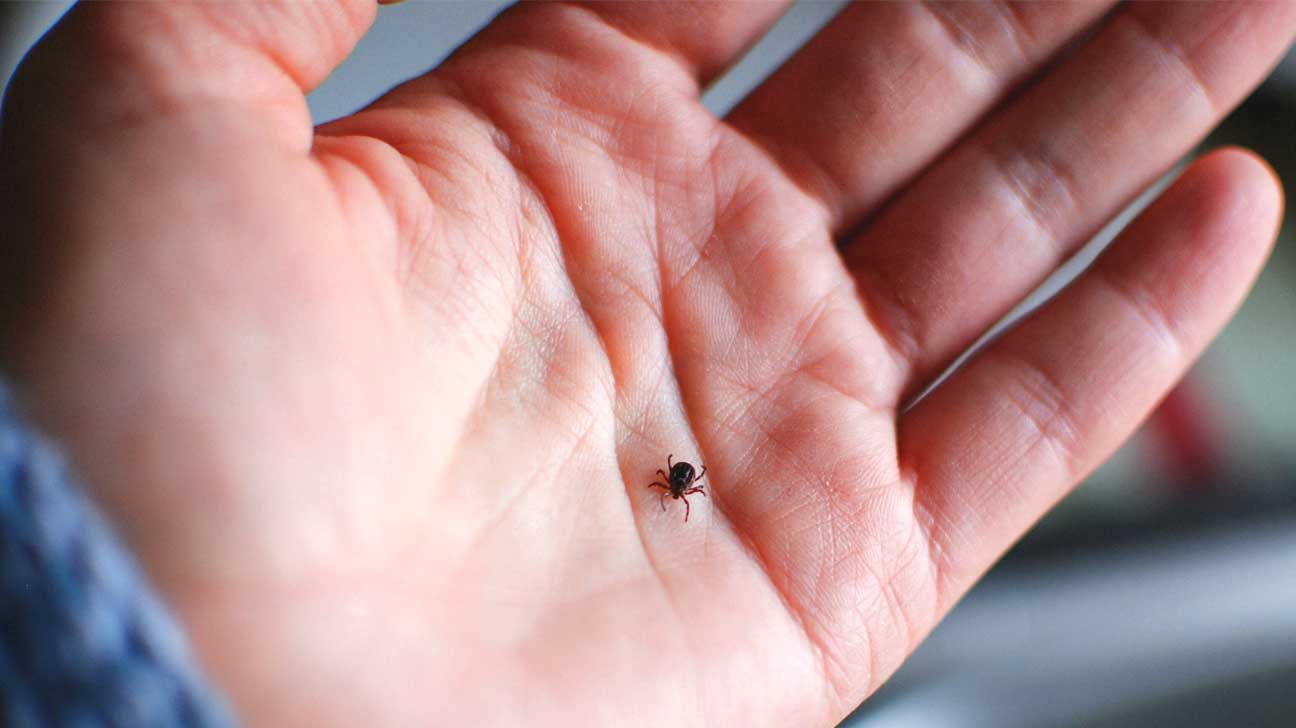Experts disagree on whether there’ll be an increase of ticks. Either way, there will still be plenty of them. Here’s what you can do to avoid the pests.

Getty Images
April showers bring May flowers. They also bring along more than a few unwanted guests — namely ticks.
But is the United States really on the verge of a “tick explosion”?
The seriousness of this year’s tick season was highlighted in a Centers for Disease Control and Prevention (CDC) Vital Signs report earlier this month.
According to the CDC, cases of disease caused by mosquitoes, ticks, and fleas have tripled in the United States since 2004.
More than 640,000 cases of vector-borne diseases were reported during that time frame.
But ticks in particular appear worrisome. Tick-borne disease accounted for more than 60 percent of those cases.
“We are seeing more ticks in more places, and indeed we live in a ‘more ticks in more places world.’ The trend, and it was supported by the CDC report maybe a week ago, is that over the last decade, vector-borne disease in general and tick-borne diseases specifically have increased,” said Thomas Mather, PhD, the director of the University of Rhode Island’s Center for Vector-Borne Disease who’s known by the nickname “tick guy.”
However, Mather disagrees that this year will be significantly different than other recent tick seasons, despite headlines from some outlets on a soon-to-come “tick apocalypse.”
“I’m thinking this year will be about on average. There is nothing that suggests to me that it would be higher than normal or lower than normal,” said Mather. “It’s not that all of a sudden the world has been dumped on… with hundreds of more ticks. It’s that the ticks have spread out just a little bit so that more people are encountering them,” he said.
And the uptick in tick encounters, and consequently tick-borne diseases, may have more to do with location than a surge in tick populations.
Not coincidentally, the spring tick season also coincides with more people doing more outdoor activities. So, just as humans are warming up from the winter months… so are ticks.
“There are ticks in more places, and those more places just happen to be in the same places where people live and play,” Mather said.
New diseases discovered
With new locations for ticks comes new diseases.
The CDC’s report indicates that seven new tick-borne illnesses were discovered between 2004 and 2016.
That’s in addition to perennial, serious conditions caused by ticks, such as Lyme disease.
The diseases carried by ticks will vary geographically, making diagnoses and treatment more difficult.
“What happens when you find ticks potentially in new places, they have the opportunity to serve as the spillover agent for germs that are in animals. Basically, they are fishing out the germs that maybe had stayed in the wildlife population,” Mather said.
Lyme disease is localized to particular areas of the United States. The CDC reports that 95 percent of cases occur within 14 states located in the Northeast — such as Maine and Vermont — and around the Great Lakes area in states like Wisconsin.
Another concern is Powassan, a rare but serious disease that can lead to severe neurological impairment and death if untreated. Approximately 1 in 15 people who contract the disease die from it.
However, there are relatively few cases of it, with the CDC reporting fewer than 100 cases in the United States in the past decade.
How to avoid ticks
There are several things people living in areas with ticks can do to stay safe this season while still being able to enjoy the outdoors.
Janis Reed, PhD, an entomologist for the insect control company Mosquito Squad, encourages you to follow these steps:
- Use repellant that has 20 to 30 percent DEET on both your skin and on top of your clothes.
- When hiking, stay in the center of the trail. Avoid walking into any tall grass or bushes.
- Wear long pants and long sleeves if you have to enter a forest or heavily wooded area.
- Check yourself, kids, and pets after going outside to these areas, especially your armpit area and hair. Ticks prefer damp and dark places.
You can also help increase the safety of your home from ticks by clearing away lawn and tree debris, mowing tall grasses, and keeping deck and patios away from wooded areas.
And remember that ticks, particularly nymphs, can be as small as a poppy seed. Any examination should be a thorough one.
You can also, for a modest investment, have your clothes infused with insect-repellent technology through a company like Insect Shield.
For in-depth information and resources on ticks and tick protection, Mather recommends checking out TickEncounter.org.
“You can either get tick-bitten or you can get tick smart,” he said.
Source: Read Full Article
